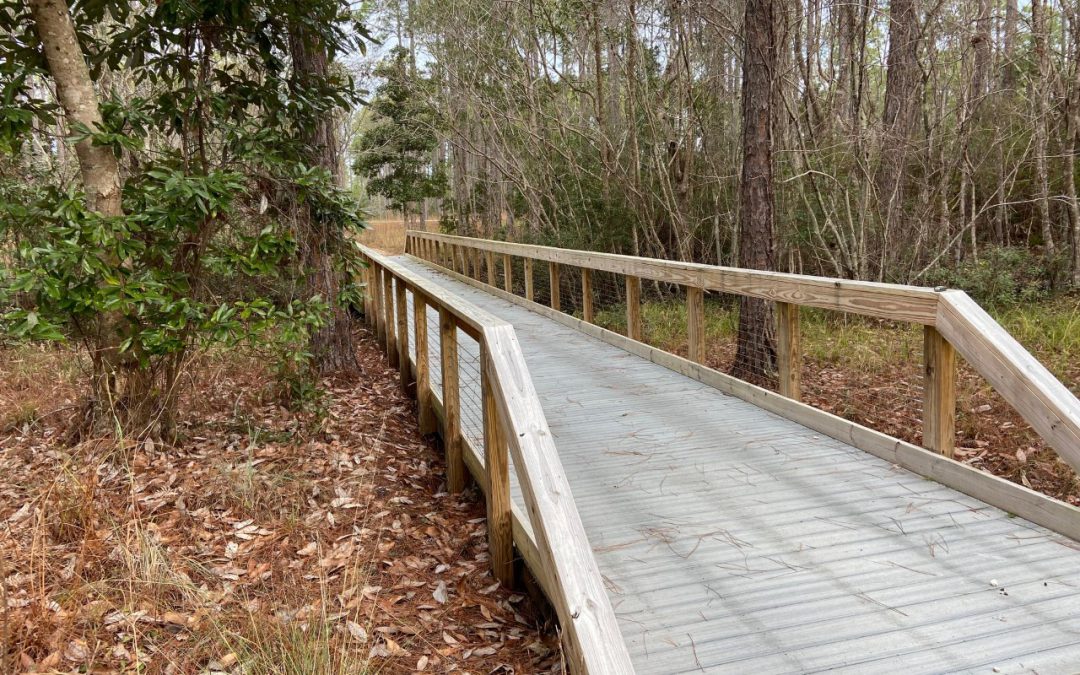
by Stephen Greer | Jan 26, 2022

Photo courtesy: Stephen Greer, Santa Rosa County
There are multiple ways to creatively construct avenues for foot traffic to areas in your landscape, community and public access areas. Over the years I have observed and enjoy many walks that curve and snake around well landscaped corners either created or provided by nature. Paths and trails can provide educational opportunities, recreation, observation points, food collection and water management. 
Designing a path, trail and walkway can happen with the eye and adventurous mind, paper and pencil, by a professional landscaper or landscape architect. Just remember these walkways can be changed and redirected if the environment in which they are set changes. Trails and paths should be determined and installed by the interests and needs at hand. Always remember to plan for who may visit these wonderous settings. Will this be a place for adults, high energy youth, or individuals with disabilities? Access to these areas may be challenging with transitions from walks to bridges, elevation changes, wet areas and others. Clearly determining the purpose of these areas is important and needed. Include others in the conversation and planning for a broader look and understanding to determine the scope of the project.
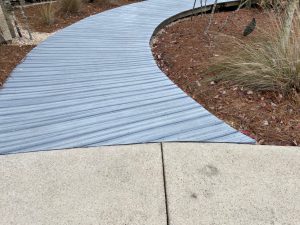
Photo courtesy: Stephen Greer, Santa Rosa Couty
With past history of marking bike, walk and running trails this is the time of year to walk the area that will become these adventures followed by planning, construction and completion before the hot weather of summer. Identifying and locating features to be included on a plat for these pathways must occur early in the process. Flag plants and strategic areas to save and highlight as a part of roughing out the path. Use signage to direct or educate. Will the walk be on a loop back to the same location or lead to other areas? All of this is a way to lead visitors and yourself to the next best point to enjoy. Jot down notes and pencil a drawing of the area with all of these observed and planned spots. Seasonal changes in the landscape along these paths are important to keep in mind and could include early emergence of flowers, spring leaves on many trees, shrubs and perennials.
Keep in mind some root removal may be needed to properly prepare the pathway subsurface, so be careful where you select a path location to reduce the impact on existing tree roots. Enjoy your gardening adventure of hardscaping!
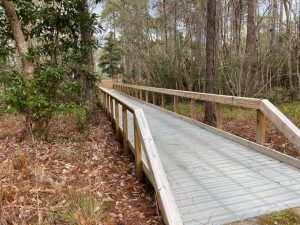
Photo courtesy: Stephen Greer, Santa Rosa County
The strenuous part of paths and trails is the construction involving plant removal, pruning and establishing a subsurface material before placing the final layer material to walk, run or bike on. Check for clearing heights that will not create high obstructions for the head by walkers or bikers. Some of this work may require the use of a tractor and rotary implement to till the walk area before placing the base material. Be careful in selecting the appropriate final path material that reduces the chance of slipping on or tripping visitors. Enjoy the journey, as a coworker and friend would always close with.
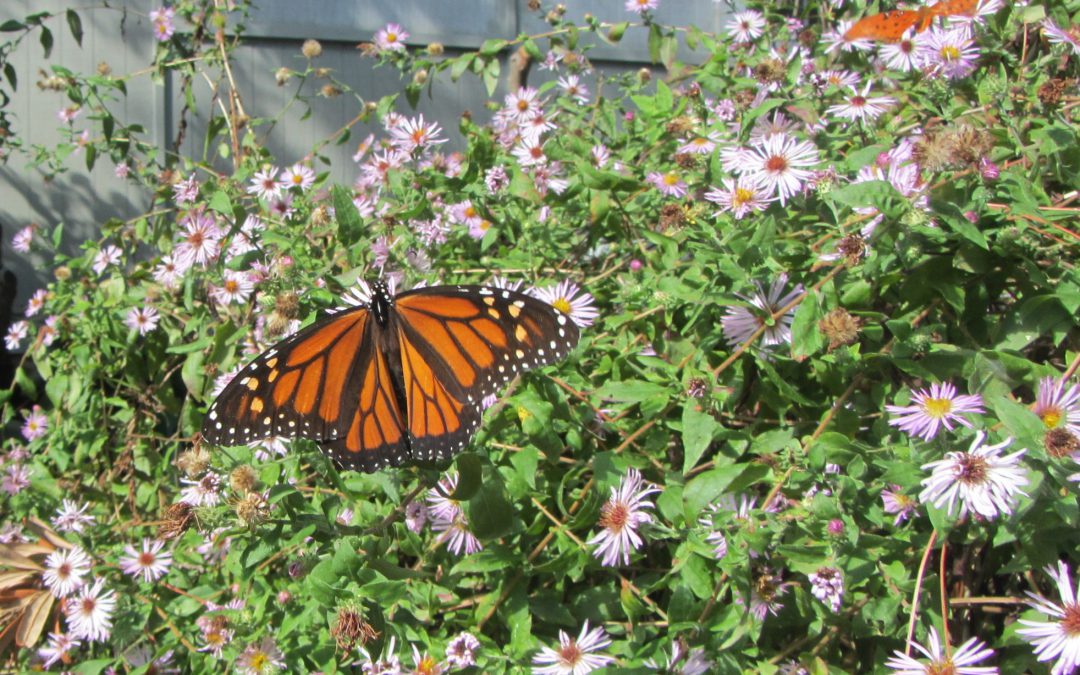
by Carrie Stevenson | Mar 26, 2019
One of the incredible benefits of living in Florida is exposure to the biodiversity of our wildlife population. From ordinary squirrels and mockingbirds to the more exotic panthers and migratory tropical birds, it is rare one can step outside the house without seeing or hearing wildlife of some variety. One of the practices we “preach” here at Extension is to provide habitat for wildlife in our yards and gardens. While cities and neighborhoods are human-centric, we share these spaces with thousands of wild animals, birds, fish, and insects and should always consider them in our actions.
Attracting birds and butterflies are popular pastimes, and Extension faculty can provide a tremendous amount of information on their preferences and food sources. However, a few unsung critters deserve homes and space as well. Just yesterday, I took a call from a gentleman who was excited to discover a small colony of bats roosting in a tree on his property. He was looking for ways to encourage them to stay, because he realized the countless benefits they provide in free insect control. Many people are nervous around bats of because of their unpredictable, irregular night flight pattern and association with scary stories. However, an average Florida bat can eat 1,000 insects a night, keeping pest populations down, reducing mosquito-borne disease, and saving millions of dollars in crop damage.
In our demonstration garden today, I was delighted to walk up on a black racer sunning itself in the grass. These common garden snakes provide valuable pest control of rats and mice, and are not aggressive or venomous. The fear of snakes often comes from the surprise of finding one unexpectedly, so always be alert and observant when outdoors. Respect for these creatures and a basic working knowledge of common venomous and nonvenomous species can go a long way towards calming one’s nerves. An excellent resource for snake identification in north Florida is this online guide. Like many snakes, this particular snake had been in tall grass, so it is always wise to be cautious in those areas.
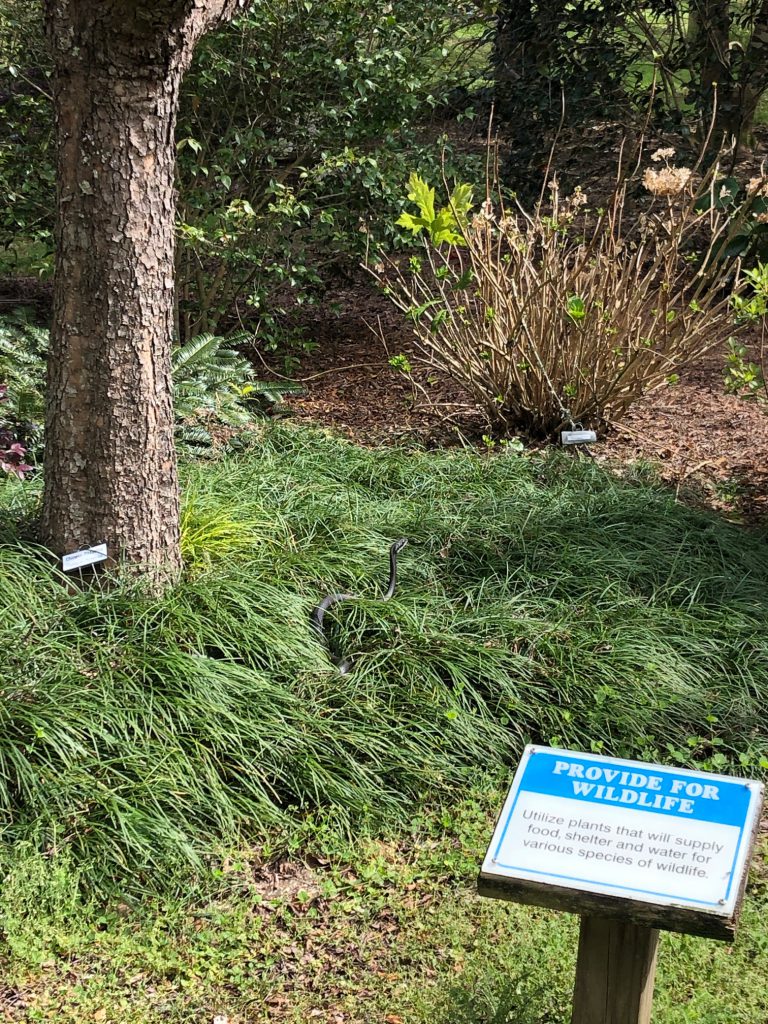
This black racer sunning in the grass must have gotten the message about utilizing habitat provided for wildlife! Photo credit: Carrie Stevenson, UF IFAS Extension
To attract wildlife, learn about their life cycle and food sources, and provide shelter, water, and food for the species you are interested in attracting. Keep in mind that inviting wildlife may also draw their predators, but know that this is part of the larger cycle. Always keep safety in mind, and if necessary keep tall vegetation and deep water to a minimum in play areas frequented by young children. The benefits of providing food and shelter for wildlife are countless for human observers and wildlife alike.
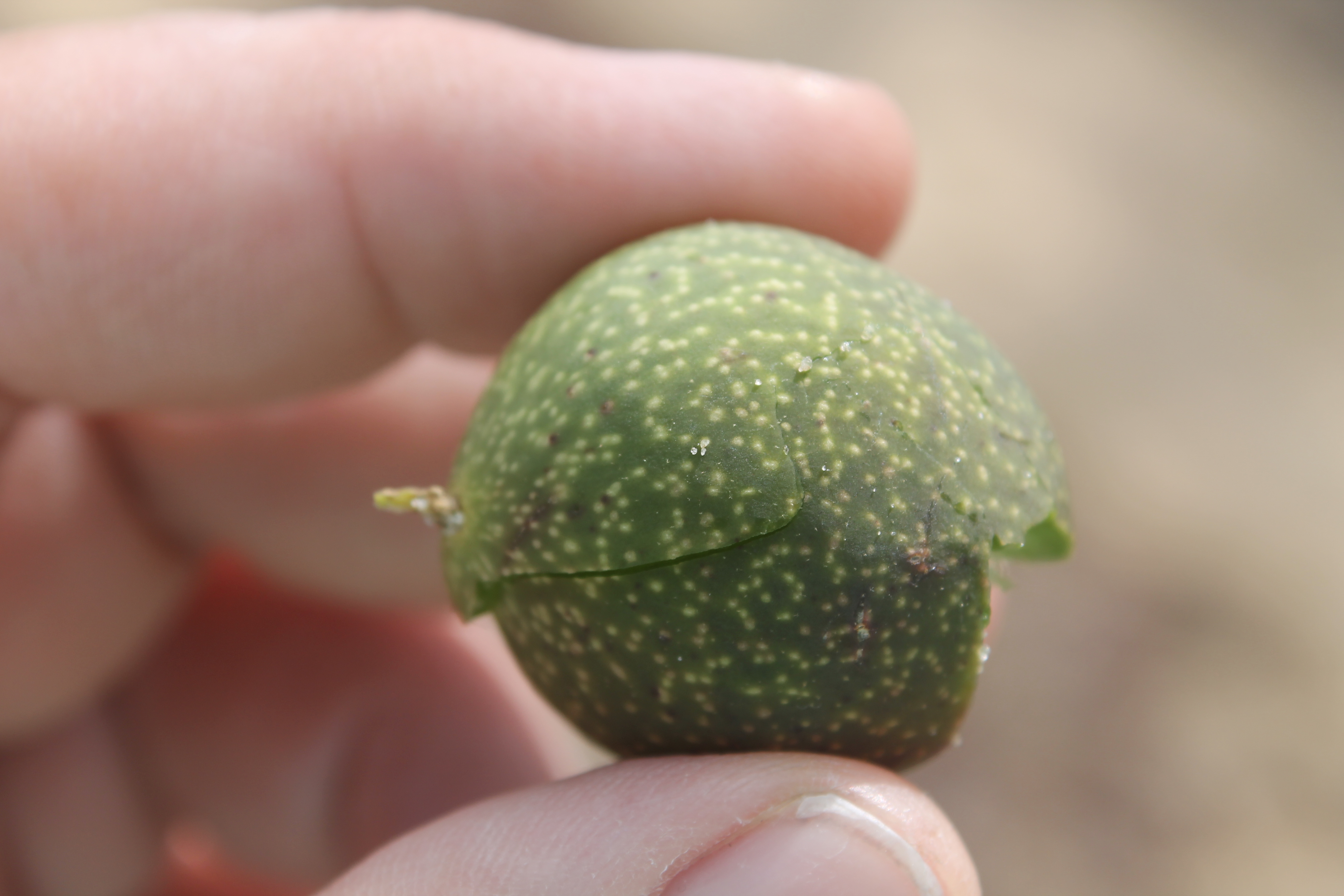
by Matthew Orwat | Jul 23, 2018
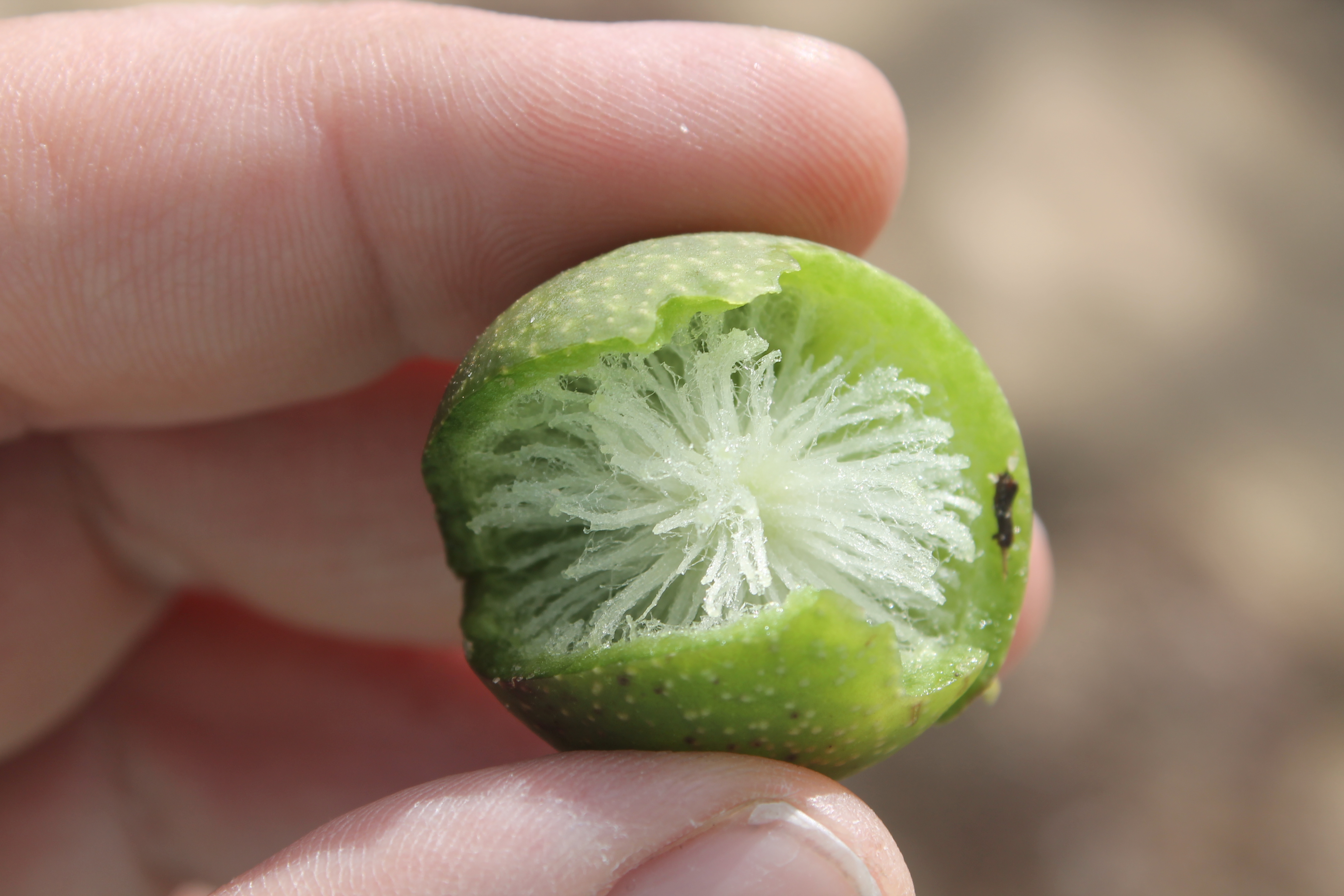
Gall caused by a wasp in the Cynipidae on Water Oak.
Humans usually believe that we have a mastery of the natural world, and know everything about it. More often than not, nature tricks us with illusions that play on our pre-conceived notions about plant life. We are conditioned to believe that everything hanging from a tree must be a fruit or nut of some sort, so much so that a wasp gall hanging from a common water oak can change our perception of that plant, making us think that it is a rare or unusual species of plant we have never seen before.
Several different species of wasps in the family Cynipidae (at least 50 different species in the continent of North America) produce fruit-like galls on various species of oaks, which are also known as oak apples. They are green or brown, depending on the species that created them, and largely hollow inside.
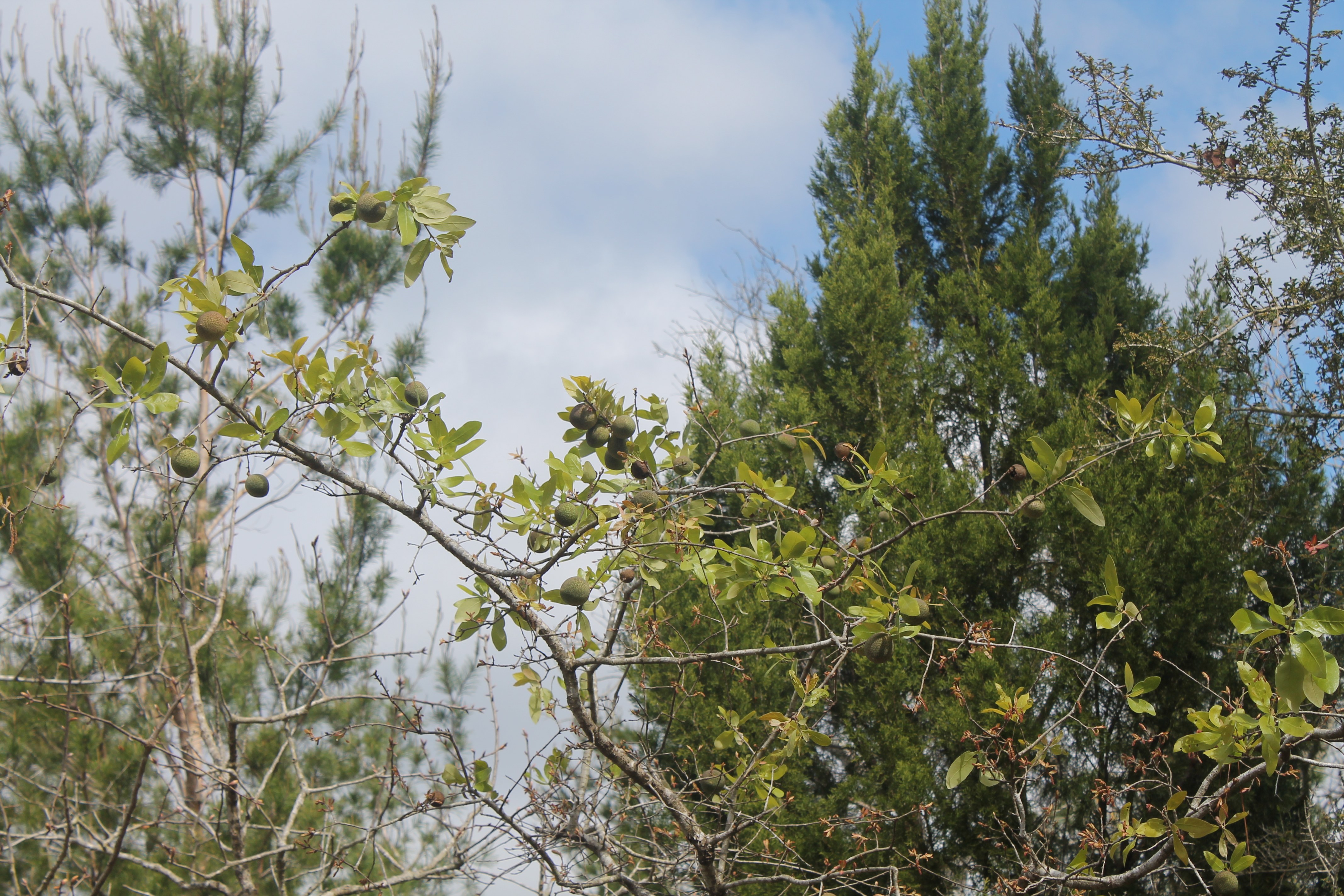
Galls on an immature Water Oak
When the wasp lays eggs on oak leaves, the eggs hatch and larvae cause the leaf tissue to be altered for their purposes. These galls provide shelter and nourishment for the developing larvae until they are ready to emerge and fly out of the center of the gall. It demonstrates a great survival strategy for an otherwise defenseless insect. The adult form of these wasps is no larger in diameter than the thickness of an old fashioned silver coin.
So, the next time you are out in nature and notice something unusual or out of place, it might be an insect gall!!
For additional information please read this excellent article “Oak Apples and the Gall Making Process”, by Joe Boggs at Ohio State University Extension










